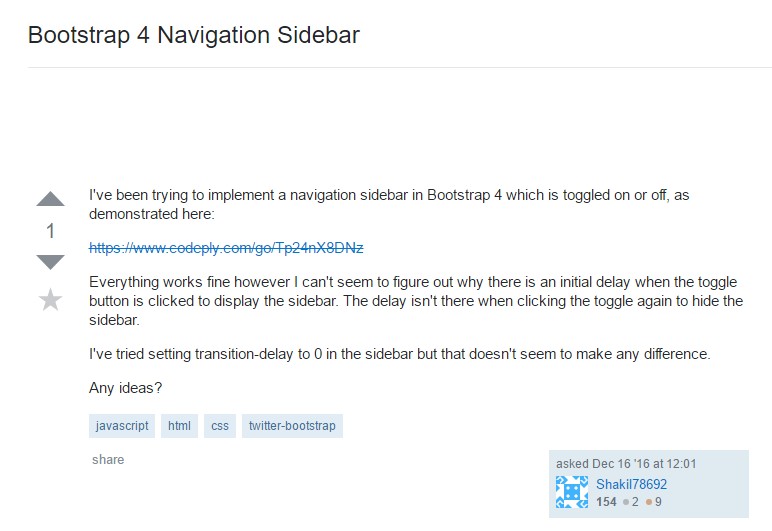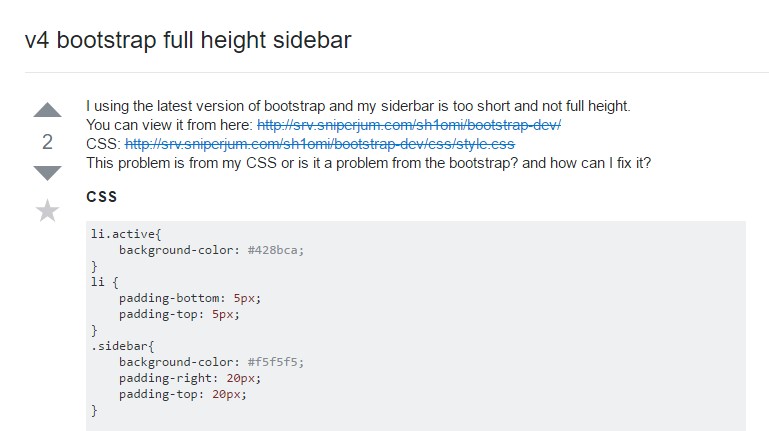Bootstrap Sidebar Menu
Introduction
Inside most of the pages we currently spot the content stretches from edge to edge in size with a practical navigating bar just above and simply efficiently becomes resized as soon as the identified viewport is hit so that more or less the showcased material fluently implements the whole entire width of the page obtainable. But at a particular events the desired purpose the webpages have to provide require together with the fluently resizing material location a different section of the provided display screen width to get appointed to a still vertical component along with certain web links and material in it-- in other words-- the well-known from the past Bootstrap Sidebar element is required. ( visit this link)
The way to apply the Bootstrap Sidebar Example:
This is pretty outdated solution however in the event that you actually need to-- you can generate a sidebar element with the Bootstrap 4 framework which along with its flexible grid system additionally deliver a several classes intendeded especially for producing a secondary rank site navigation menus being really docked along the webpage.
However why don't we begin it quick-- via simply nesting some columns and rows -- It is supposed this maybe the most convenient solution. And by nesting I mean you can absolutely gave a
.rowAnd so let us say we want a right adjusted Bootstrap Sidebar Toggle with a number of information in it and a principal page to the left of it. We must establish the grid tier down to what we need to keep this placement right before the sidebar and the major web content stack above each other-- let us say-- medium and up. So a possible approach obtaining this could be this:
Originally we need a container feature to host the columns and rows and since we are actually designing something a bit more complicated the
.container-fluidNext we require a
.row.col-md-9.col-md-3Next in all of these columns we are able to just create some additional
.rowA number of extra tips
Additionally in case you need to create a sidebar navigation menu along with the desired
.col-*.sidebar<main>.col-*Aside from that in the event you have to create a sidebar navigation menu along with the desired
.col-*.sidebar<main>.col-*Look at a few video clip short training regarding Bootstrap sidebar
Connected topics:
Bring in off-canvas navigation sidebar element

Stackoverflow: Bootstrap 4 Navigation Sidebar

V4 Bootstrap entire height sidebar
